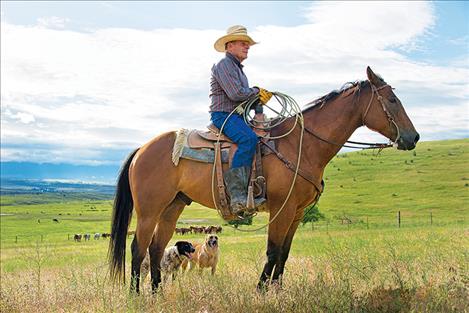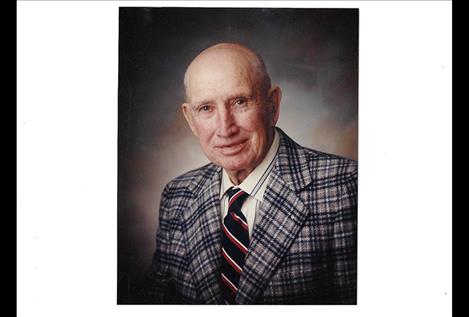Cowboy Hall of Fame inductees hail from Lake County
Hey savvy news reader! Thanks for choosing local.
You are now reading
1 of 3 free articles.
LAKE COUNTY – Two notable men from Lake County have been chosen to join the Montana Cowboy Hall of Fame and Western Heritage Center based on their contributions to the culture and history of the region. Asa Clayton “A.C.” Brooks, who lived in St. Ignatius, and Carl V. Moss of Polson are the inductees from the region.
Christy Stensland, the Montana Cowboy Hall of Fame executive director, helped to facilitate the selection process.
“Those chosen are Montanans who have made notable western heritage contributions,” she said.
One living and one legacy inductee was chosen from each of 12 districts across the state. Community members submitted nominations, and local trustee panels in each district decided on the final inductees.
Stensland said that the inductees represent the ideals of the past and set examples for the future.
“We don’t want to forget those who sacrificed for Montana, those who made our communities better,” she said. “They are such a good example for what we should be.”
Asa Clayton “A.C.” Brooks
A.C. Brooks was a cowboy and a Montanan at every phase of life. According to the biography compiled for his induction, Brooks took his first steps on the train platform in Missoula and passed away at his home in St. Ignatius at age 85.
Brooks’ daughters nominated him for the award, at the recommendation of many friends. One of his daughters, Avice Hoff, said that he embodied the most important aspects of being a cowboy.
“He knew how to make a horse gentle, and he knew how to make young men into very good gentlemen,” she said.
According to the biography compiled by the MCHOF and WHC, Brooks’ talent for working with horses became apparent early in life, soon after his family settled in the Mission Valley in 1910. He acquired his first horse when he was seven years old, and became a skilled horse trader. On the ranch where Brooks grew up, cattle was sold to the US Army for service overseas during World War I.
Hoff said that one story of his childhood was particularly important to her father. When Brooks was in grade school, he trained a horse named White Swan to jump fences. White Swan became such a skilled jumper that she could clear his family’s Model T. When men who traveled with Wild West shows came to visit the ranch, Brooks showed them that his horse could jump over their car. The men asked Brooks to join their show, which would be performing in New York City.
Brooks asked his mother if he could go, and she said, “Boys do not ride the trains, they ride the plains.” He sold his horse to the show and she performed for many seasons.
Brooks led the Montana Saddle Club Association and was a charter member of the Mission Valley Back Country Horsemen’s Association. He sold horses to the National Parks Service and the Forest Service.
Brooks and his wife Katherine had four daughters. He also mentored many young men who were interested in horses. Hoff said that her father was dedicated to his home.
“His love and his life was in the Mission Valley,” she said.
According to the biography, Brooks’ lifetime of ranching and handling horses can be summed up in one phrase that he said often. “Well, we kind of like to ride horses.”
Carl Victor Moss
According to his nominator, Gil Mangels, Carl Moss is known as a generous, skilled rancher throughout the Mission Valley.
“He’s a real hands-on cowboy and a hard working man,” Mangels said.
Moss moved to a ranch in Moiese in 1954 when he was five years old, and lived in the Mission Valley for 65 years. He developed his skills for working with cows and horses as he grew up.
According to the MCHOF and WHC biography, Moss and his brother took over his parents’ ranch in 1963. Moss excels at all aspects of ranching, including veterinary care. He knows his cattle even from a distance.
Moss is also known for raising quarter horses, which are strong and dependable. The horses have been photographed for advertisements for Marlboro cigarettes. Today, Marlboro photographer Norm Clasen brings his students to Moss’s ranch so that they can photograph Moss and his horses.
“He’s more comfortable on a horse than on a tractor,” Mangels said of Moss.
Moss and his wife Kathy raised eight daughters and two sons.
Mangels said that in addition to his ranching skills, Moss is also a notable man for his generosity. “If there was a blizzard outside and you were shivering he would give you the shirt off his back,” he said.

















